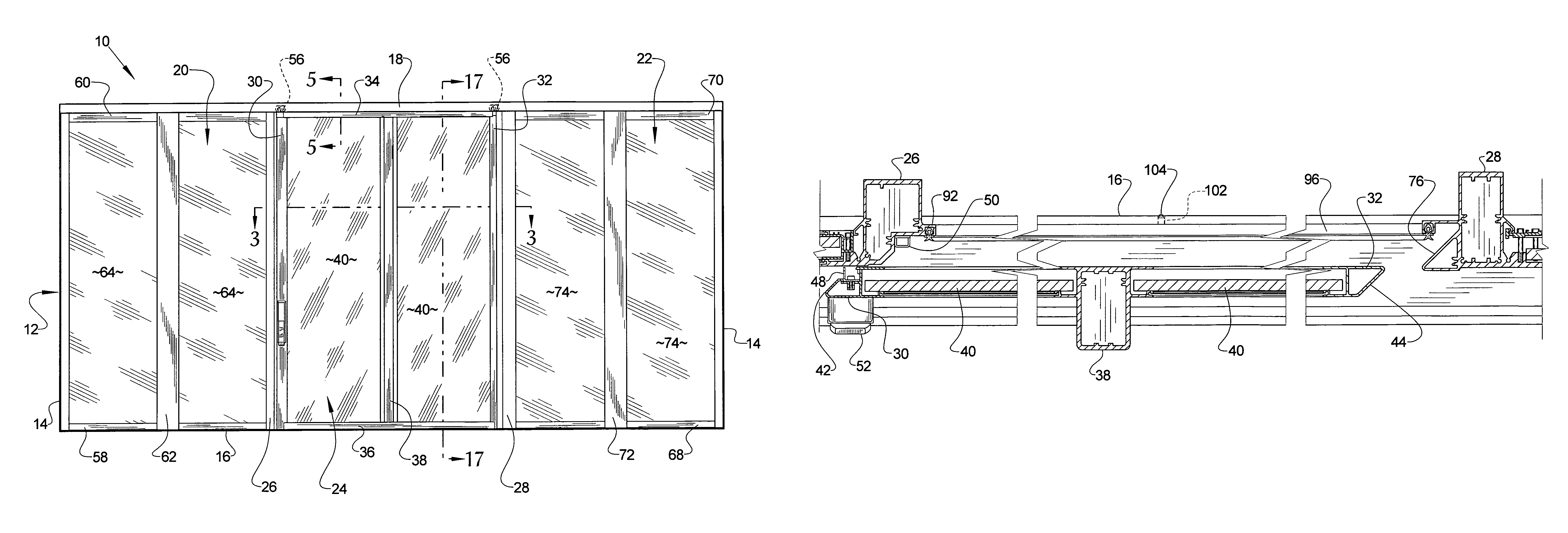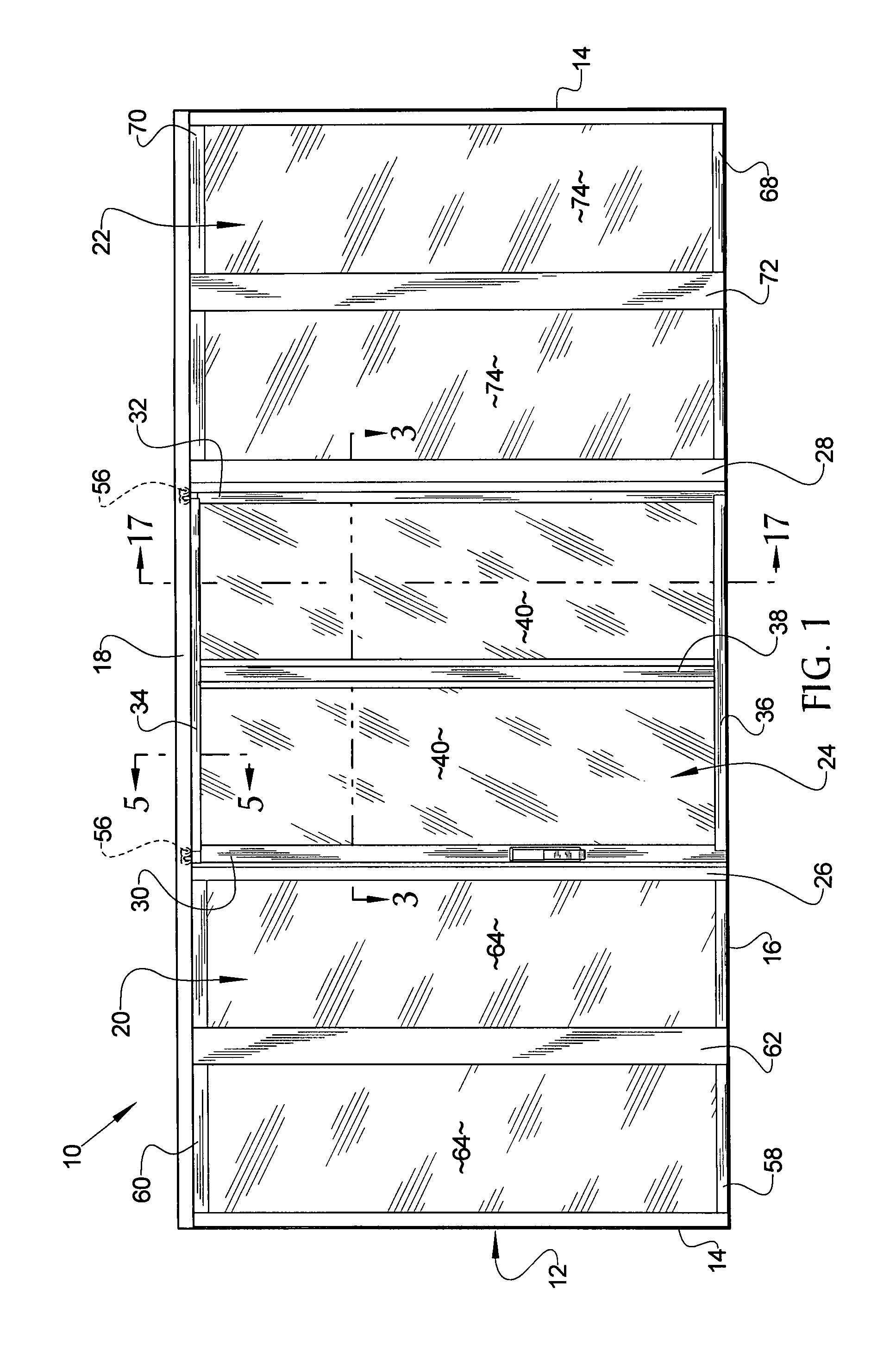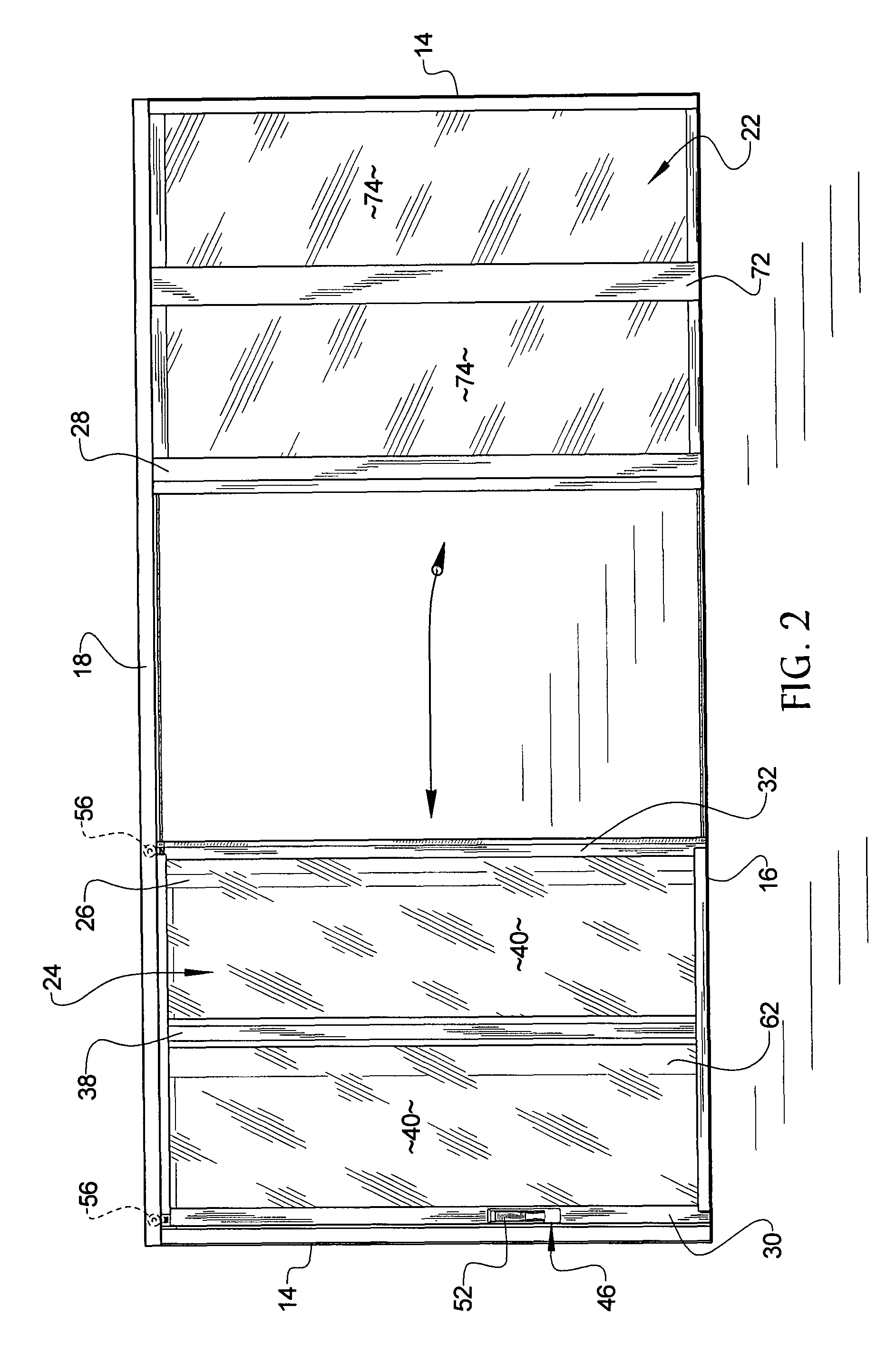Sliding door assembly
a door and sliding technology, applied in the direction of door/window fittings, rain/draught deflectors, constructions, etc., can solve the problems of sliding windows, dissimilar items, and the joint of two or more items made of dissimilar materials, and achieve the effect of simple design and construction, high level of reliability, and high level of moisture barrier reliability
- Summary
- Abstract
- Description
- Claims
- Application Information
AI Technical Summary
Benefits of technology
Problems solved by technology
Method used
Image
Examples
Embodiment Construction
[0037]Referring now to the drawings, it is seen that the sliding door assembly of the present invention, generally denoted by reference numeral 10, is comprised of an overall frame assembly 12 that has a pair of fixed jambs 14 on either side of the frame assembly 12, a sill or threshold 16 that connects the fixed jambs 14 at the lower ends thereof and a header assembly 18 that connects the fixed jambs 14 at the upper ends thereof. The sliding door assembly 10 is illustrated as a three panel system wherein an overlay panel assembly 20 and a non-overlay panel assembly 22 are each fixed and the middle panel assembly 24 is operable, however, the system 10 can be configured as a two panel 20 and 24 assembly, one panel assembly 20 fixed and the other panel assembly 24 operable or other appropriate sliding door configuration. A fix-move mullion 26 extends between the threshold 16 and the header assembly 18 proximate the overlay panel assembly 20 while a move-fix mullion 28 extends between ...
PUM
 Login to View More
Login to View More Abstract
Description
Claims
Application Information
 Login to View More
Login to View More - R&D
- Intellectual Property
- Life Sciences
- Materials
- Tech Scout
- Unparalleled Data Quality
- Higher Quality Content
- 60% Fewer Hallucinations
Browse by: Latest US Patents, China's latest patents, Technical Efficacy Thesaurus, Application Domain, Technology Topic, Popular Technical Reports.
© 2025 PatSnap. All rights reserved.Legal|Privacy policy|Modern Slavery Act Transparency Statement|Sitemap|About US| Contact US: help@patsnap.com



